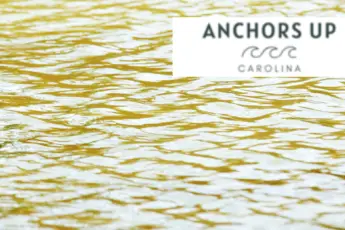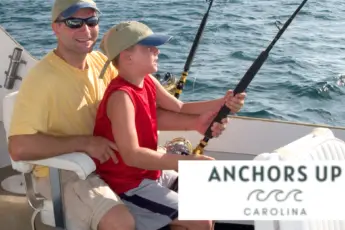Saltwater lagoons are common along the coastal regions of the Southeast coast. I have the opportunity to fish saltwater lagoons on a regular basis because my community has over 50 to choose from. With that said, I have watched the migration of bait during the transition of seasons as waters cool or warm. If you’re lagoon fishing, it is important to know the impacts of temperatures on baitfish.
Why The Presentation Of Baitfish Changes Seasonally
Without question, when you’re targeting saltwater fish in lagoons, you are going to need to change up your technique based on the season.
Importantly, if you do not remain flexible as water temperatures shift, your chances of catching fish will be greatly reduced.
Much to people’s surprise, at some points of the year, there will be no live bait available to catch with a cast net. During other times, the bait will be so thick you can almost walk on them. Considering the abundance or scarcity of bait, you’re going to need to change up your approach.
Understanding Fish Migration In Lagoons Based On Seasons
Undoubtedly, you’re going to want to know the patterns associated with baitfish in lagoons. Understanding the patterns will better help improve your probability of catching fish. Here is what to know about seasonal bait populations.
Winter
During the winter, you will not encounter large populations of baitfish in lagoons if the water temperatures dip below 60 degrees. Here in Savannah, all of the baitfish have migrated out of the lagoons and traveled south.
Generally speaking, mullet schools prefer temperatures around the 66-degree mark. In order to thrive, they continue to stay in the ideal temperature range.
I am amazed to watch how quickly baitfish flee lagoons as the water temperatures fall. It seems as though one day, they are present, and the next, they are gone. You will need to be mindful of this when planning your lagoon fishing strategy.
Spring
Rather than traveling south to find warm waters, mullets transition back to the north and find their way into lagoons along the way.
Again, to remain in 66-degree water, they move south from Florida up along the east coast and flood into tidal lagoons. Here in Savannah, I see the first influx of mullet in late May.
Summer
In the summer months, the mullet have exited south and central Florida lagoons and have pushed far up the east coast. Remember, they are following a specific temperature range. The waters to the south will be too warm for comfort.
However, keep in mind that mullet will stay within a specific range. Here in Savannah, water temperatures sore into the low 80s, but mullet will continue to stick around through the summer.
Fall
The fall is one of my most favorite times to fish because of the abundance of baitfish. In the early to mid-fall, South Carolina and Georgia lagoons are teeming with bait.
Remember, when bait is present, gamefish aggressively feed. I like to take advantage of September and October here in Savannah Lagoons. However, when the first cold fronts of the season roll in, the mullet heads out, which is typically at the end of October.
How To Fish Lagoons Depending On The Presence Of Bait
Keep in mind that in order to catch fish, you’re going to need to change your strategy. Here is how to adjust based on the presence of bait.
How To Fish Lagoons When Bait Is Present
When bait is present in fishing lagoons, the technique for catching fish is simplified. I recommend the following.
- Throw a cast net for live bait and keep them in a bait bucket with an aerator.
- Place a mullet on a circle hook beneath a popping cork on with a lead for fishing the bottom.
- Allow the bait to swim freely by leaving the bail open.
- Remain patient until you have a strike.
How To Fish Lagoons When Bait Is Not Present
I wish that I could say that it was as easy to catch fish in lagoons during the cold months compared to the warm months.
During the winter, you’ll have to change up your plan of action entirely when fishing with bait compared to artificials. Here is what to know about fishing bait after they have left the lagoons.
- Bait will not be available to catch with a cast net. I recommend keeping and freezing mullet caught during the summer for winter use.
- An alternative to keeping frozen mullets is visiting a bait shop and purchasing frozen mullets or live shrimp.
- When fishing frozen mullet, cut them into chunks, place them on a circle hook, and let them sit on the bottom.
- If you’re using live shrimp, place the shrimp on a circle hook beneath a popping cork.
- Wait for a strike.
I highly suggest using frozen mullet over live shrimp. You will, without a doubt, go through a significant amount of shrimp as a result of small fish, such as pinfish, eating the bait before gamefish.
Consider The Season When Lagoon Fishing
The season is the most important variable to consider when fishing in lagoons. The fluctuation in temperatures based on the season will greatly impact the approach to catching fish. Trust me, I have fished lagoons extensively. Lastly, don’t give up just because the bait isn’t present; instead, change your technique.







